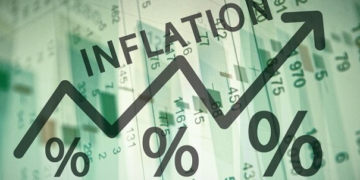Visit Investogist’s homepage for more stories.
Yesterday, the major pairs enjoyed bullish strength. EURUSD, GBPUSD and AUDUSD ended in green, printing very strong daily bullish candles.
GBPUSD looks very determined to break out of its four-year range. I have suspended my trading in this pair because of how significant the resistance level it is currently trading around is. Long positions are a no for me until the breakout of this level is confirmed.

AUDUSD returned back to its bullish stance today. The pair has generally been in a strong uptrend since March 2020. It had a minor retracement last week but it recovered its bullish stance with a strong candle yesterday. I am neutral on the pair for now but will be looking for a long entry signal.

For today our eyes will be fixed on European Central Bank’s President Lagarde and her speech by 10 AM about the outlook of the European economy. Her comments may positively or negatively affect the euro’s trend in the short-term. This is a high impact event so be watchful for significant volatility during this period.
Read: NSE daily report: Market gains 0.36% on a day dominated by surging Insurance Stocks
By 11 AM, Eurostat will be releasing the industrial production report. It shows the volume of production of Industries such as factories and manufacturing. The uptrend is regarded as inflationary which may anticipate interest rates to rise. Usually, if high industrial production growth comes out, this may generate a positive sentiment (or bullish) for the EUR, while low industrial production is seen as a negative sentiment (or bearish).
In the US, by 2:30 PM, we will have our eyes on the Year on Year and Month on Month Consumer Price Index (ex-food and energy) report from the US Department of Labour and Statistics. The Consumer Price Index (ex-food and energy) is a measure of price movements by the comparison between the retail prices of a representative shopping basket of goods and services.
Those volatile products such as food and energy are excluded in order to capture an accurate calculation. Generally speaking, a high reading is seen as positive (or bullish) for the USD, while a low reading is seen as negative (or Bearish). This is also a high impact event, so be watchful for significant volatility and keep your risk management tools in place.
By: Victor Nnadi
An Independent Economics Researcher























































